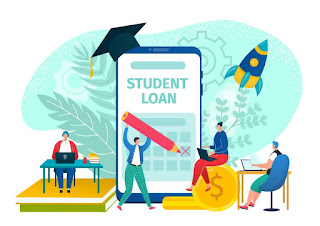The Burden of Student Loans: Understanding, Managing, and Conquering Educational Debt
Education is often hailed as the key to a brighter future, opening doors to opportunities and personal growth. However, for many students pursuing higher education, the path is lined with the looming specter of student loans. In this comprehensive guide, we will delve into the world of student loans, exploring what they are, why they matter, the various types available, strategies for responsible borrowing, and how to navigate the journey towards financial freedom after graduation.
Understanding Student Loans
Student loans are financial instruments designed to help individuals cover the costs of higher education, including tuition, fees, books, and living expenses. These loans are offered by both government agencies and private lenders, and they typically come with various terms and conditions, including interest rates, repayment options, and eligibility criteria.
Why Student Loans Matter
1. Access to Education: Student loans provide access to education for those who may not have the means to pay for college upfront. They enable students from diverse backgrounds to pursue their academic and career aspirations.
2. Investment in the Future: Education is an investment in one's future earning potential. For many, student loans are a means to secure a higher-paying job and a better quality of life.
3. Building Credit: Successfully managing student loans can help individuals establish a positive credit history, which is crucial for various financial endeavors, including obtaining credit cards, renting apartments, and buying homes.
Types of Student Loans
There are several types of student loans available, with varying terms and sources:
1. Federal Student Loans: These loans are issued by the U.S. Department of Education and offer benefits such as fixed interest rates, income-driven repayment plans, and loan forgiveness programs. Common federal loan types include Direct Subsidized Loans, Direct Unsubsidized Loans, and PLUS Loans.
2. Private Student Loans: Offered by banks, credit unions, and private lenders, these loans may have variable interest rates and fewer borrower protections compared to federal loans. They are typically used to bridge funding gaps after exhausting federal aid options.
3. State-based Student Loans: Some states offer their own loan programs with varying interest rates and terms. These loans are designed to support in-state residents pursuing higher education.
Strategies for Responsible Borrowing
While student loans can be invaluable in achieving educational goals, they should be approached with careful consideration and a plan for repayment. Here are some strategies for responsible borrowing:
1. Borrow Only What You Need: It's crucial to borrow only the amount necessary to cover educational expenses. Avoid taking out loans for non-essential costs.
2. Understand Your Terms: Familiarize yourself with the terms and conditions of your loans, including interest rates, repayment schedules, and grace periods. Understanding these details will help you make informed decisions.
3. Explore Federal Aid First: Before turning to private loans, maximize your eligibility for federal student aid, which often comes with more favorable terms and borrower protections.
4. Consider Income-Driven Repayment Plans: Federal loans offer income-driven repayment plans that adjust your monthly payments based on your income and family size. These plans can help make loan repayment more manageable.
5. Budget and Plan for Repayment: Create a budget that includes loan repayment as a fixed expense. Consider creating a financial plan that outlines your strategy for paying off your loans efficiently.
Navigating Life After Graduation
Graduation marks the beginning of a new chapter in life, including the responsibility of repaying student loans.
1. Stay Informed: Keep track of your loan balances, interest rates, and repayment schedules. Sign up for automatic payments to ensure on-time payments and potentially receive interest rate discounts.
2. Explore Loan Forgiveness Programs: If you have federal loans, research loan forgiveness programs that may apply to your profession or situation. These programs can offer relief from a portion of your debt.
3. Consider Refinancing: If you have a stable income and good credit, you may be eligible to refinance your loans with a private lender to secure a lower interest rate. Be cautious, as this may result in the loss of federal loan benefits.
4. Emergency Fund: Build an emergency fund to cover unexpected expenses, so you don't have to rely on credit or defer loan payments in times of financial hardship.
5. Seek Financial Guidance: If you're struggling with loan repayment or facing financial challenges, don't hesitate to seek advice from a financial counselor or loan servicer.
Conclusion
Student loans can be both a stepping stone to educational achievement and a source of financial stress. By understanding the types of loans available, responsible borrowing practices, and post-graduation strategies, you can minimize the burden of educational debt and pave the way to a successful financial future. Remember that student loans, when managed wisely, can be a valuable tool in investing in your education and ultimately achieving your career and life goals.


Posting Komentar untuk "The Burden of Student Loans: Understanding, Managing, and Conquering Educational Debt"